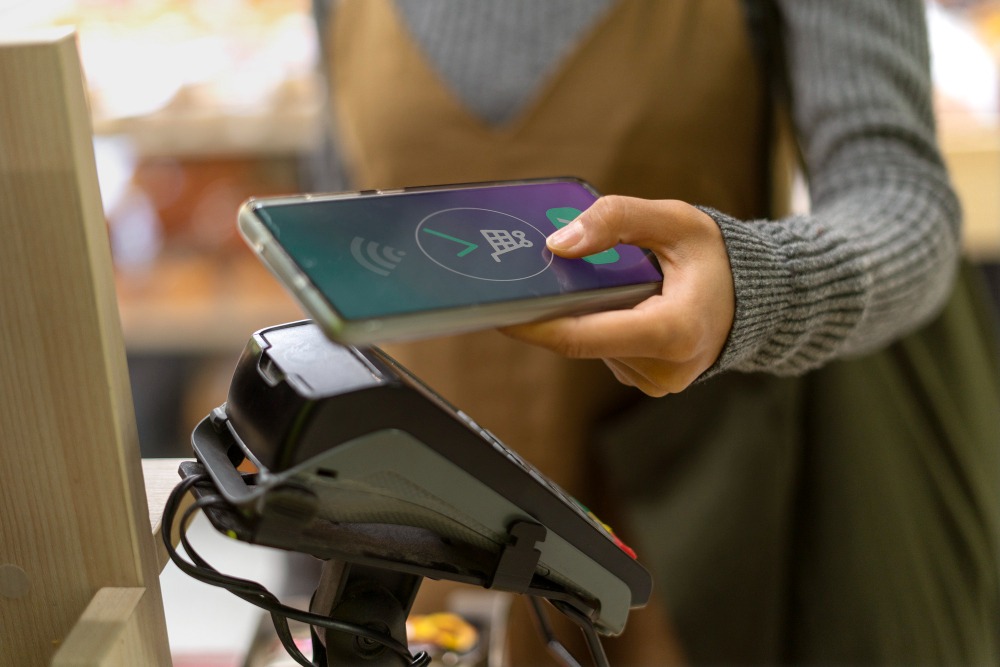Accessible through any internet-connected device, it’s typically provided by payment processors or merchant service providers. This article explains how virtual terminals work, their main benefits, security features, and when using one makes the most sense for different types of businesses.
Understanding Virtual Terminals
A virtual terminal is an online tool that replaces physical payment hardware, letting businesses accept card payments without a reader. Instead of swiping, the business manually enters the customer’s card details to process the transaction. This setup is ideal for remote or card-not-present sales, giving flexibility to service providers, freelancers, and call centers. Just like streamlined vendor onboarding, virtual terminals simplify operations by making secure payments possible from any internet-connected device, improving convenience and efficiency for both businesses and their customers.
How a Virtual Terminal Works
First, the business logs into a secure online dashboard provided by their payment processor. Next, they manually enter the customer’s payment details, such as card number, expiry date, and amount. Once submitted, the virtual terminal securely sends the information to the payment processor for authorization and settlement. If approved, the payment is completed within seconds. Businesses can also choose to have receipts automatically emailed to customers, creating a smooth and professional transaction experience.
Key Components of a Virtual Terminal
Key components of a virtual terminal include a secure merchant dashboard, data entry fields for card details, transaction records, and reporting tools to track payments. Many payment processors, just like Vellis offer systems that integrate with accounting, CRM, or eCommerce platforms, allowing businesses to manage transactions efficiently and keep financial and customer records accurate.
Benefits of Using a Virtual Terminal

Some of the major advantages of adopting a virtual payment terminal for different types of businesses currency include:
Convenience and Accessibility
Virtual terminals offer unmatched convenience and accessibility, allowing businesses to process payments anytime, anywhere, using a laptop, tablet, or phone. This flexibility is especially useful for service-based or remote businesses that don’t rely on traditional POS hardware, making it easy to handle secure transactions and keep operations running smoothly from any location.
Versatility for Different Payment Methods
Virtual terminals support multiple payment methods, including credit cards, debit cards, ACH payments, and recurring billing. This versatility allows businesses to serve both local and international clients with ease. Similar to the flexibility seen in closed-loop vs. open-loop payment systems, virtual terminals adapt to various transaction types, helping businesses streamline global payment processing.
Enhanced Security
Most virtual terminals comply with PCI DSS standards, ensuring safe payment processing. They use advanced encryption and tokenization to protect sensitive cardholder data, reducing the risk of fraud and keeping customer information secure during every transaction.
Easy Recordkeeping and Reporting
Virtual terminals offer built-in analytics to track transactions, refunds, and customer payment histories. These insights simplify accounting and financial reporting, making it easier for businesses to monitor cash flow and maintain accurate records.
When Businesses Should Use a Virtual Terminal
Businesses should use a virtual terminal when processing remote or card-not-present payments. It’s especially practical for industries like professional services, healthcare, education, and hospitality. Small businesses or those moving online benefit from its flexibility, allowing secure transactions without traditional POS hardware while streamlining payment management and improving customer convenience.
For Remote and Phone Payments
Businesses accepting phone orders or donations can securely use a virtual terminal. It’s also ideal for mail-in payments or subscription-based billing, providing a safe, flexible solution for card-not-present transactions.
As a Backup to POS Systems
A virtual terminal serves as a backup when physical POS systems are unavailable or offline, ensuring business continuity during outages or while traveling, so transactions can continue smoothly without disruption.
How to Set Up a Virtual Terminal
Setting up a virtual terminal involves choosing a provider, creating an account, and entering payment details to run the first transaction. The process is quick and requires no special hardware.
Step 1 – Choose a Payment Processor
Choose a trusted payment processor such as Vellis that offers virtual terminal functionality. Evaluate providers based on fees, supported currencies, and security standards to ensure reliable, secure, and cost-effective payment processing for your business.
Step 2 – Create a Merchant Account
Create or link a merchant account to process payments. This account securely transfers funds from customer transactions directly to the business bank account, ensuring safe and efficient payment handling.
Step 3 – Access and Configure the Virtual Terminal
Log into the virtual terminal’s web dashboard and configure settings such as currency, receipt templates, and transaction limits to match your business needs and streamline payment processing.
Step 4 – Train Staff and Test Transactions
Train authorized staff on proper data entry and security compliance procedures. Conduct test transactions to ensure the virtual terminal functions correctly and staff are confident using the system.
Security and Compliance in Virtual Terminals

Security and compliance are crucial for virtual terminals. Businesses must handle payments securely and protect customer data, ensuring adherence to PCI DSS standards and relevant data privacy laws to maintain trust and prevent breaches.
Encryption and Tokenization
Encryption secures payment data during transmission, while tokenization replaces sensitive card information with unique tokens, protecting customer details and reducing the risk of fraud during transactions.
Role of Payment Processors in Security
Reputable payment processors enhance security by providing fraud monitoring, two-factor authentication, and chargeback prevention tools, helping businesses protect transactions and minimize financial risks.
Business Responsibilities
Businesses must train staff, use secure passwords, and avoid storing payment data manually to maintain security and follow best practices for safe virtual terminal usage.
Comparing Virtual Terminals vs Other Payment Methods
Virtual terminals allow manual entry of card details for remote or card-not-present transactions, unlike point-of-sale systems, which rely on physical hardware for in-person payments. Online payment gateways process eCommerce transactions automatically but may lack flexibility for phone or mail orders.
Virtual Terminal vs. Point-of-Sale (POS)
POS systems require physical card readers for in-person transactions, while virtual terminals work entirely online, offering more flexibility but being less ideal for high-volume retail environments.
Virtual Terminal vs. Payment Gateway
Payment gateways are integrated into online checkout pages, processing transactions automatically, while virtual terminals require manual entry of card details. Both can complement each other, enabling businesses to handle hybrid payment setups efficiently.
Key Features to Look for in a Virtual Terminal Provider
Some of essential features that define a good provider for small to large businesses are:
- Multi-currency support for international transactions
- Low transaction fees to reduce costs
- Recurring billing for subscription-based services
- Easy refund and transaction reversal options
- Strong customer support for quick assistance
Lastly, it’s vital to perform integration with existing payment processors to enhance speed, reliability, and seamless payment management
Future of Virtual Payment Terminals
Digital payments and remote transactions are driving the evolution of virtual terminals, making them increasingly essential for modern businesses. Cloud-based payment systems, automation, and AI-driven fraud detection are transforming how transactions are processed securely and efficiently. Adoption is expected to grow among SMEs, freelancers, and subscription-based businesses, as these solutions offer flexibility, scalability, and streamlined payment management for a wide range of industries.
FAQs
What is a virtual terminal used for?
It allows businesses to process credit or debit card payments online without using a physical card reader.
Is a virtual terminal safe for payments?
Yes, it uses encryption, tokenization, and PCI DSS compliance to protect sensitive card information.
Who needs a virtual terminal?
Businesses that accept remote or over-the-phone payments, such as service providers, clinics, and freelancers.
How does a virtual terminal differ from an online gateway?
A virtual terminal requires manual entry of card data, while a gateway processes automatic customer checkouts.
Can I use a virtual terminal on my phone or tablet?
Yes, most providers offer web-based access or mobile apps that work on smartphones and tablets.
What are the fees for using a virtual terminal?
Fees vary by provider but usually include a per-transaction rate and sometimes a small monthly subscription cost.
Can virtual terminals handle recurring payments?
Yes, many providers include automated recurring billing options for subscriptions or memberships.
References
Join Stored: What Is a Virtual Terminal? Complete Guide to Payment Processing
https://www.joinstored.com/blogs/what-is-a-virtual-terminal
MONEI: Virtual terminal: what is it and how can it help your business?
https://monei.com/blog/virtual-terminal
Verifore: Virtual Terminal
https://verifone.cloud/docs/online-payments/virtual-terminal
Rapyd: What’s a Virtual Terminal?
https://www.rapyd.net/blog/whats-a-virtual-terminal/

Leave a Reply